#kaisen azuma
Text

Three-legged Moon Seeker
53 notes
·
View notes
Text



sluges
53 notes
·
View notes
Text
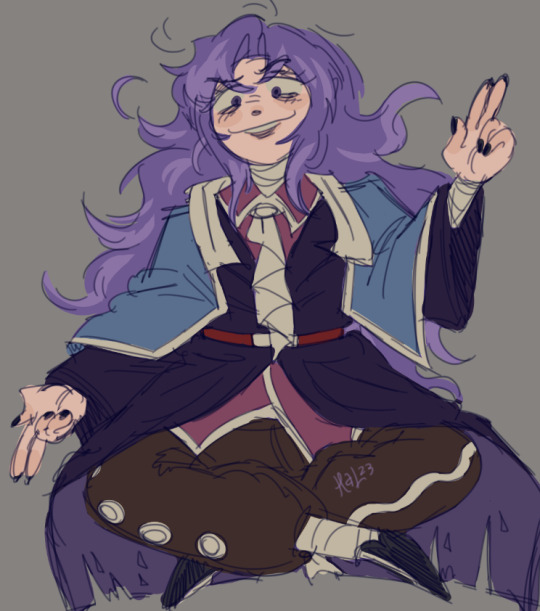
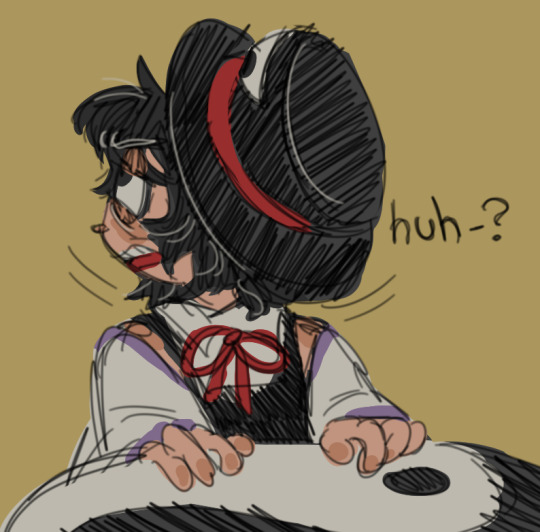
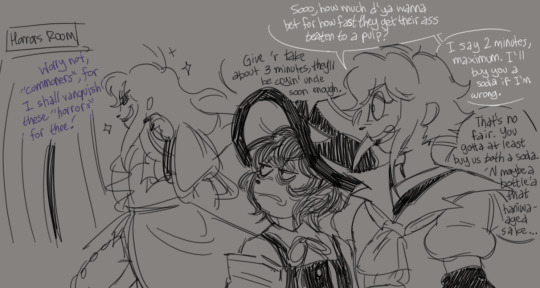


let me be perfectly clear on who my favorite thinking idiot is! (assorted annoyance doodles)
#len'en project#wilhelm von clausewitz halcyon hisuimaru#tsubakura enraku#yabusame houlen#garaiya ogata#kujiru kesa#kaisen azuma#ygeah. they have been even before i knew what lenen was#i was just like wow this guy sucks but they are also unfortunately a mirror image of myself#will resume touhouposting soon sorry girls#i got emo about cringe ass space enby
43 notes
·
View notes
Note
Hi there! I remember in one of your previous analyses that you'd love an opportunity to talk about shikigami (I think). As someone who is also quite curious about it, would you mind divulging on the subject?
Oh of course, thanks for reminding me!
Shikigami: From History to Len'en
Shikigami, like barriers (which I also did a Len'en-focused analysis on), is one of those things I feel like many who are into Japanese media, especially traditional fantasies, have a general idea about, yet don't really have a grasp on their real-life conception and history.
So, just like in the barriers post, let's take a look at what shikigami are all about, in real-life history and in the Len'en series!
Origins of Onmyōdō
To understand the origins of shikigami, we first have to have a cursory understanding of the complex art of Onmyōdō (陰陽道 lit. "the way of Yin and Yang").
Roots in Chinese Philosophy
Onmyōdō, as we understand it, has its roots in the Chinese philosophical Theory of Yin-Yang and the Five Phases (陰陽五行思想).
Yin and Yang (陰陽) can be described as the fundamentally opposite but interconnected forces that constitute as well as cause change in everything in the universe.
The Five Phases (五行) is a conceptual framework which is used to classify and explain a wide array of phenomena, including the movement of celestial bodies, the interaction between internal organs to, the rise and fall of political regimes and the properties of medicine, amongst other things. The five phases are, in order, fire, water, wood, metal, earth.
The Theory of Yin-Yang and the Five Phases then combines the two, and was associated with and used for a variety of (what were at the time considered) natural sciences, such as astronomy, calendar making, time keeping and divination.
Development in Japan
When transmitted to Japan alongside Confucianism, Daoism, Buddhism, it was accepted by the Japanese people as having actual power, and its associated practices like divination and manipulating fortune were accepted as well.
As these beliefs and practices fused with the native Japanese beliefs (what one may classify as Shinto) and Japanese Buddhism (remember that Buddhism also had its own major developments in Japan), a system of beliefs and practices that were uniquely Japanese was born.
This was Onmyōdō, and it was a state-controlled craft. Onmyōji (陰陽師 lit. "master of yin and yang") were the practitioners of this craft who belonged to the Bureau of Onmyō (陰陽寮), and they offered their services to the royal family and the noble elites.
The Historical Shikigami
Examining the Word "Shikigami"
Now that we can finally take a look at the historical shikigami. They are known by a number of names: shikigami/shikijin (式神・識神), shiki-no-kami (式の神・識の神), shi-ki (式鬼) or shiki-kishin (式鬼神).
No matter the rendering, there is a common element throughout most of them: 式 read shiki or just as shi. It means "to make use of", and refers to the onmyōji's control over these beings.
The specific beings that these names list are kami (神 gods/spirits), oni (鬼) and kishin (鬼神). The last term refers to a myriad of concepts, from wild and rampaging kami to divine spirits to any supernatural thing that causes mysterious phenomena.
Below: Famous onmyōji Abe no Seimei (in black) accompanied by two of his shikigami (below Seimei).
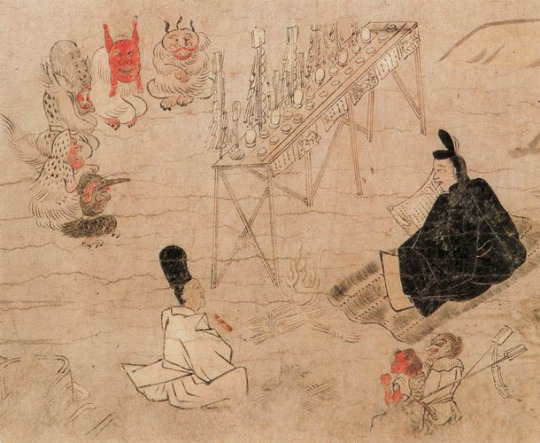
So, from the name, we can tell that shikigami refers to the gods, spirits, supernatural beings and even just supernatural forces under the onmyōji's control. Additionally, it is said that the process through which an onmyōji summons these spirits is also called shikigami..
Types of Shikigami
Shikigami are in fact invisible to everyone except their master, but can take on forms that are visible to the average person. In general, shikigami can be classified in to two ways:
One is according to the form they appear in, such as human-shaped (人型), bird/beast-shaped (鳥獣型), youkai-shaped (妖怪型), etc.
More interesting, perhaps, is classifying them based on how they were created:
First are "mental-action shikigami", (思業式神 shigou-shikigami) they are manifested through the onmyōji's thought, and are said to directly reflect their master's ability.
Next are "personified shikigami" (擬人式神 gijin-shikigami), they are produced by imbuing a doll, often made of paper, straw or plants, with spiritual power. Those which obtain a will of their own are considered higher-rank, while those that do not are considered lower-ranked.
Below: A straw doll used to summon a shikigami into.

Final final type are called, literally, "gods of evil deeds and revealed retribution" (悪行罰示神 akubyoubasshi-kami). It's rather unwieldy and not exactly clear what it means.
So instead, I'll call these "shikigami through karmic retribution". They are typically beings who committed evil deeds in the past who are defeated and subjugated by onmyōji, becoming their shikigami.
The final type, perhaps obviously, are considered particularly dangerous, as an unskilled master can be overpowered by the shikigami, allowing it to cause harm to its master and others.
Functions of a Shikigami
Basically, there's nothing a shikigami cannot do, as they are (provided that the onmyōji is powerful enough) completely bound to the will of their master.
Here I'll just briefly list a few of what shikigami were said to be used for throughout history and myths:
Defeating harmful and devil spirits
Possessing someone to cause them harm
Placed at key locations as protector deities
Pass on messages and deliver objects
Reconnaissance
Housework, house-watching and personal care
Yeah, basically anything you can think of.
Onmyōdō in the Present Day
Persistance and Development
Onmyōdō and onmyōji, along with the Bureau of Onmyō, persisted throughout Japanese history, slowly gaining popularity amongst the general populace as well. It has its ups and down, even losing its official status once, but it never faded away.
One particularly famous Onmyōji that should not go unmentioned is Abe no Seimei (安倍晴明), said to be a genius in the art. Many of his exploits are left behind as legends, and he himself is a popular topic of many modern fiction stories.
Below: Mitori's Pentagram "Bellflower Seal Crush", based on a seal of the same name invented by Seimei to ward off demons.

Fall and Modern Status
It was not until the after Meiji Revolution, in 1870, that the new government passed a bill to ban Onmyōdō as a superstition, under the support of pure Shintoists and the exclusionists, who rejected Onmyōdō based on its Chinese roots.
After this, the Onmyōdō of old basically disappeared from Japanese society. Later, when the ban was lifted, Onmyōdō was already reduced to a point where it would never return to the level of prestige and power it once held during the Heian period.
Nowadays, there are two schools of Onmyōdō left, the "Tensha Tsuchimikado Shinto" (天社土御門神道) and the Izanagi School (いざなぎ流).
Tensha Tsuchimikado Shinto
This school was established by a family that traces it lineage back to Abe no Seimei, the Tsuchimikado Family.
Thanks to its fusion of Onmyōdō and Shinto, it was able to survive the ban on Onmyōdō by leaning on its Shinto side. Though it would lose official support regardless and turn to private practice.
The Izanagi School
A unique folk religion developed independently in the archaic Tosa Province (modern day Kōchi Prefecture). It has elements of Onmyōdō belief and practice, but aren't recognised by Tensha Tsuchimikado Shinto.
Popular Culture
The colourful stories of onmyōji from various legends, especially of them binding youkai to their control and excercising other mystical powers, captured the popular imagination and lead to a myriad of fictional depictions of them.
It is here that the most common depiction of shikigami emerges, as youaki bound by onmyōji, or spirits summoned into paper dolls by them. And it is here that we loop back to Len'en.
Shikigami of Len'en
The most info on shikigami in the Len'en series can be found in Garaiya Ogata's BPoHC profile:
A shikigami receives spiritual power from its master, and can act using the accumulated spiritual power from them.
How much spiritual power they can save up and what they can do with said accumulated power varies from shikigami to shikigami.
[...]
However, the master's spiritual power is naturally limited.
[...]
However, since a slight amount of their master's power is constantly consumed to keep their shiki up and running. Multiplying too much will overburden their master, ultimately deactivating the shiki.
It would seem that shikigami run on a fairly unique set of rules in Len'en, that of an exchange and balance of spiritual power between master and subject.
The master needs to use their power to somehow activate and maintain a shiki contract with the subject, which creates a link between the two and allows the subject to draw on their masters power. In the case that the master runs out of power, the contract immediately deactivates.
The amount of spiritual power a shikigami stores seems to be somewhat proportional to how powerful they are, as seen in Kuriju Kesa being technically weaker than Kaisen Azuma, but still seen as more useful thanks to the former being better at storing spiritual power from Garaiya.
We don't really know much else about shikigami in the series, though there are a few things that we can speculate upon.
Bound Evildoer Shikigami
First we can examine the most prominent master-shikigami pairs, that between Garaiya and Kaisen & Garaiya and Kurjiu.
Below: Garaiya with Kaisen and Kujiru in animal form.

It's possible that these two are what I called "shikigami through karmic retribution", as they were apparently "pretty mischievous" in the past, prior to meeting Garaiya.
This is particularly likely with Kaisen, as one of their inspirations, the Chinese mythological creature known as Jinchan (金蟾 Lit. "gold/golden toad"), actually has pretty much this play out, just framed under Daoism instead of Onmyōdō.
In the folktale Liu Hai Tricks Jinchan (劉海戲金蟾), it is said Liu tamed a malevolent and greedy three-legged toad after fishing it out of the east sea. It became Jinchan and was henceforth the immortal's companion, following Liu wherever he went.
So yeah, basically "evil youkai does bad deeds" → "good person comes around and tames it" → "evil creature now serves the good person somehow".
With Kujiru, it's not as direct, since their basis, Kesa-gozen (袈裟御前), was the victim in her story, rather than the villain or a villain redeemed. Still, if JynX wanted to somehow collapse both the villain and the victim into one, they certainly can, so I can't really say that this disproves Kujiru as a "shikigami through karmic retribution".
Bonus Note: Jinbei
There's really not enough information on Jinbei to say much about them as a shikigami, but it's interesting to note that they don't (or at least don't only) draw power from their master.
Rather, they draw power from and supply power to the Mugenri Barrier, the current Senri priests (Yabusame and Tsubakura) as well as a yet undisclosed source.
On a personal note, Jinbei gives me the vibe of a spirit that was summoned into an object. Similar to the personified shikigami, though not summoned into a doll, but into the very jinbei that they're always wearing.
Conclusion
There's still much that we don't know about shikigami in Len'en, so other possibilities still exist with both Kaisen, Kujiru and Jinbei.
For example, Kaisen and Kujiru can also be spirits summoned into the youkai, akin to how the Touhou series conceptualises its shikigami. Or Jinbei could be a youkai who's subjugation contract is renewed with every new Senri priest.
Basically what I'm saying is that canonically all we have is the Garaiya profile and the two related 2021 interview answers that I've linked.
In any case though, I hope you at least got something out of the first part about the historical shikigami, and how they are classified and used even to this very day.
As usual, I hope you enjoyed~! :)
#len'en#len'en project#len'en lore#garaiya ogata#kujiru kesa#kaisen azuma#jinbei#jinbei len'en#shikigami#I tried to find english translations for these terms#but like I said#well known in popular culture but not in its historical understanding#so it was difficult to find much about this in english#I'm leaving the “jinbei” tag there#maybe this'll be interesting for the traditional Japanese fashion crowd#who knows?
21 notes
·
View notes
Text

Do frogs dream of organic apples?
4 notes
·
View notes
Text
#len'en#len'en project#len'en shipping poll#tournament poll#Azuma Kaisen/Kesa Kujiru#Adagumo no Saragimaru/Amanomiya Jun
4 notes
·
View notes
Text
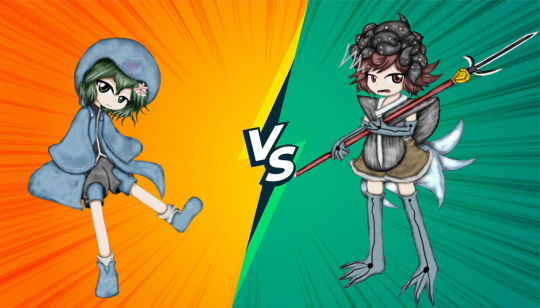
who would post the stupidest discourse?
6 notes
·
View notes
Note
Supporters react to a group dance by the Geats Quartet. https://www.youtube.com/watch?v=jYoK8xTybBA
Keiwa is Itadori
Neon is Kugisaki
Ace is Fushigoro (although character wise, it’s Michinaga)
And Michinaga is Gojo (and character wise, it’s Ace)
Meanwhile I'm just here wondering when Ankh/Ryousuke Miura's gonna do this dance (he plays Gojo in the Jujutsu Kaisen stage play)
Honestly I don't know how the supporters would react XD I don't know much about Jujutsu Kaisen but Keiwa and Neon seem pretty spot on at least from the dance alone? Lol. Idk about Ace and Azuma though
3 notes
·
View notes
Text

— MY TOP 10 FAVORITES CHARACTERS

asassination classroom:
1. gakushuu asano
2. tadaomi karasuma
3. ryunosuke chiba
4. itona horibe
5. karma akabane
6. yuma isogai
7. nagisa shiota
8. ryoma terasaka
9. ren sakakibara
10. rio nakamura
attack on titan:
1. armin arlert
2. ymir
3. jean kirstein
4. connie springer
5. levi ackerman
6. historia reiss
7. marco bott
8. sasha braus
9. niccolo
10. falco grice
black butler
1. vincent phantomhive
2. edward midford
3. snake
4. prince soma asman kadar
5. snake
6. sebastian michaelis
7. grell sutcliff
8. agni
9. lau
10. undertaker
bungo stray dogs:
1. chuuya nakahara
2. kenji miyazawa
3. sakunosuke oda
4. ryunosuke akutgawa
5. fyodor dostoevsky
6. ranpo edoagawa
7. gin akutagawa
8. edgar allan poe
9. sigma
10. ango sakaguchi
death note:
1. l lawliet
2. misa amane
3. mello
4. near
5. rem
6. ryuk
7. naomi misora
8. light yagami
9. touta matsuda
10. light’s sister
free:
1. natsuya kirishima
2. rin matsuoka
3. go matsuoka
4. kisumi shigino
5. isuzu mikoshiba
6. momotaro mikoshiba
7. ikuya kirishima
8. haruka nanase
9. ryuji azuma
10. seijuro mikoshiba
genshin impact:
1. thoma/tartaglia
2. kaveh
3. kazuha
4. chongyun
5. xiao
6. cyno
7. kaeya alberich/diluc ragnvindr
8. dainsleif
9. albedo
10. tomo
haikyuu:
1. yu nishinoya
2. tetsuro kuroo
3. kenma kozume
4. hajime iwaizumi
5. toru oikawa
6. hitoka yachi
7. keiji akaashi
8. kei tsukishima
9. lev haiba
10. ryunosuke tanaka
hunter x hunter:
1. kite
2. chrollo lucilfer
3. leorio paradinight
4. kurapika
5. alluka zoldyck
6. shalnark
7. killua zoldyck
8. pakunoda
9. shizuku murasaki
10. gon freecss
jujutsu kaisen:
1. toge inumaki
2. megumi fushiguro
3. mai zenin
4. yuta okkotsu
5. yuji itadori
6. choso
7. ryomen sukuna
8. utahime iori
9. kento nanami
10. suguru geto
kuroko’s basketball:
1. ryota kise
2. kazunari takao
3. tatsuya himuro
4. atsushi murasakibara
5. seijuro akashi
6. daiki aomine
7. tetsuya kuroko
8. taiga kagami
9. yukio kasamtsu
10. riko aida
moriarty the patriot:
1. james bonde
2. sebastian moran
3. william james moriarty
4. fred porlock
5. sherlock holmes
6. louis james moriarty
7. albert james moriarty
8. john h watson
9. lucien atwood
10. frida macaulay
my hero academia:
1. hitoshi shinso
2. hawks
3. oboro shirakumo
5. eijiro kirishima
4. dabi
5. mirko
6. shota aizawa
7. denki kaminari
8. rody soul
9. mirko
10. hanta sero
neon genesis evangelion:
1. rei ayanami
2. kaworu nagisa
3. toji sukuhara
4. shinji ikari
5. ryoji kaji
6. ritsuko akagi
7. asuka langley sohryu
8. kensuke aida
9. hikari horaki
10. pen pen
seraph of the end:
1. guren ichinose
2. shinya hiragi
3. mikaela hiyakuya
4. yuichiro hiyakuya
5. shiho kimizuki
6. lacus welt
7. yoichi saotome
8. makoto narumi
9. shinao hiragi
10. mitsuba sangu
sk8 the infinity:
1. reki kyan
2. miya chenin
3. cherry blossom
4. joe
5. langa hasegawa
6. nanako hasegawa
7. koyomi kyan
8. shokichi oka
9. shadow
10. reki’s childhood best friend
spy x family:
1. yor forger
2. anya forger
3. loid forger
4. becky blackbell
5. damian desmond
6. franky franklin
7. bond forger
8. sylvia sherwood
9. yuri briar (ik he’s obsessed with yor but still…)
10. henry henderson
the case study of vanitas:
1. astolfo granatum
2. dominique de sade
3. noé archiviste
4. louis de sade
5. vanitas
5. chloé d’apchier
6. jean-jacques chastel
7. olivier
8. roland fortis
9. murr
10. loki oriflamme
tokyo revengers:
1. takashi mitsuya/seishu inui
2. hajime kokonoi
3. kazutora hanemiya
4. keisuke baji
5. hakkai shiba
6. chifuyu matsuno
7. shuji hanma
8. atsushi sendo
9. naoto tachibana
10. kakucho
#aot#bsd#mtp#tokyo revengers#snk#tr#bungou stray dogs#genshin impact#spy x family#sxf#sk8 the infinity#seraph of the end#ons#owari no seraph#nge#neon genesis evangelion#mha#bnha#boku no hero academia#my hero acedamia#moriarty the patriot#jjk#jujustu kaisen#haikyuu#hq#hxh#hunter x hunter#my top 10
14 notes
·
View notes
Text
May 31st, 2023: Tokyo National Museum and Akihabara
On today's excursion we went to Tokyo's national museum and Akihabara. The Tokyo's national museum contained a plethora of historical artefacts including art. Although, I wasn't there for too long the most interesting thing that caught my eye in the museum was the samurai armor and the weapons. Besides from it looking really cool it is interesting to know that the samurai lasted for almost 700 years.
After visiting the museum, we went to Akihabara, a place where is mainly known for anime and manga. I saw multiple shops where they sold anime figurines and manga. There were also a lot of arcade games and maid cafes around which I thought was interesting. Of course, I bought anime figurines in Akihabara and at a surprisingly good price. I bought a Megumi and Getou figurine both from the anime Jujutsu Kaisen and a Jotaro Kujo figurine from the anime JOJO's Bizarre Adventure. I couldn't have been happier with my purchase.
In the evening, I went to a maid cafe with a friend. The cafe was called At home cafe. In this cafe I ordered an iced matcha latte, omelet over rice, and a dessert. At the very end I was able to take a polaroid picture with a maid of my choice. The service was excellent, the staff were very friendly and the environment was cozy. The food was also delicious, and to be honest, it exceeded my expectations.
Based on my experience and readings, in the Tokyo's National Museum, I was able to see first-hand a haniwa. Haniwa are clay sculptures that were made in Ancient Japan and were usually buried with the dead. However, on our excursion to Akihabara, we discussed in the readings about Otakus and we could clearly see that culture in Akihabara. Besides there being anime and manga, there is also a eroticized versions of anime and manga as discussed in the reading "Database Animals" by Azuma. Which depicts otaku culture in the modern world.

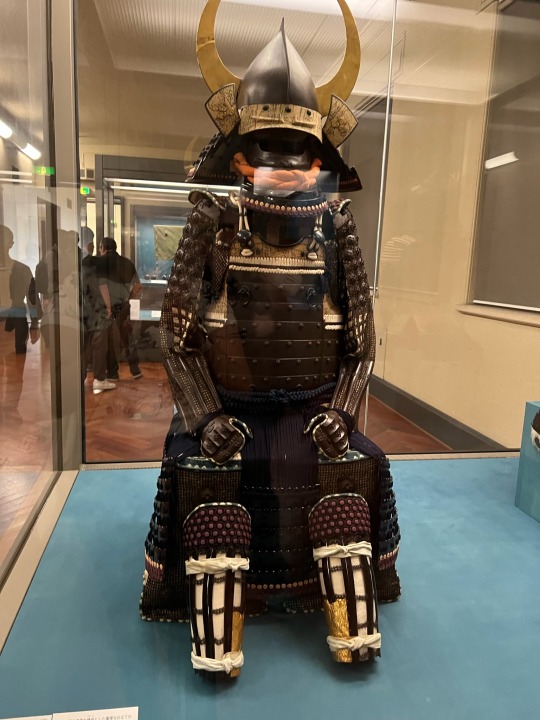

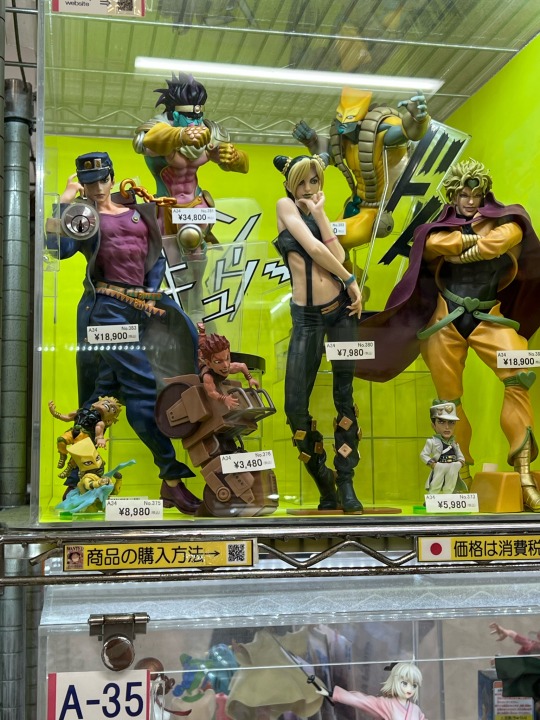




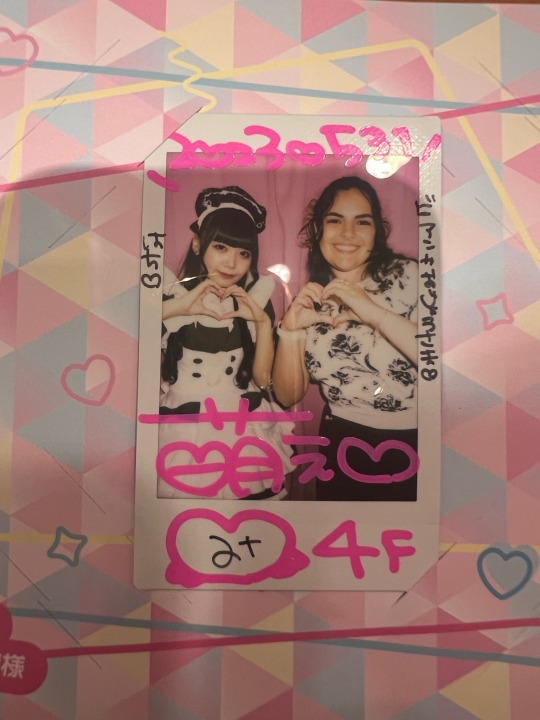

0 notes
Photo

Clause’s Birthday Party (ft. Kaoru Kashiwagi, Kurohebi, Yuitia, Xeno a, Karl the cat from Twitter.) (also ft. Tenkai Zuifeng, Kaisen Azuma, and Kujiru Kesa.)
I know it passed already but I finally finished the drawing. (Clause’s birthday is August 24th.)
This is because these people “signed up” to be in Clause’s party after they made a lengthy set of tweets about it.
Clause has many thanks!

(Translation of this tweet:
"Garaiya is taking the picture for my birthday and couldn't be in the photo." )
#len'en#len'en art#birthday#Clause#Kaoru Kashiwagi#Kurohebi#Yuitia#Xeno a#Karl the cat#Tenkai Zuifeng#Kaisen Azuma#Kujiru Kesa#Seihou#someone's oc#Twitter#Twitter rp#cake#cactus
16 notes
·
View notes
Photo

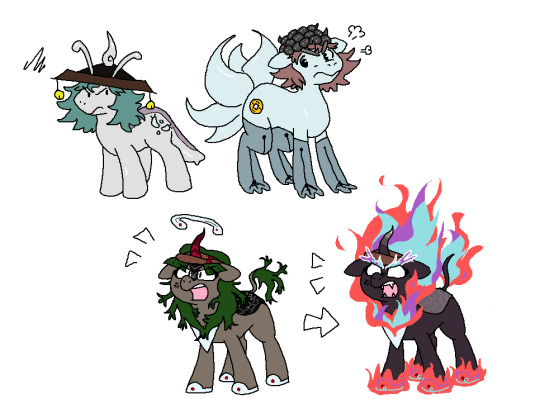
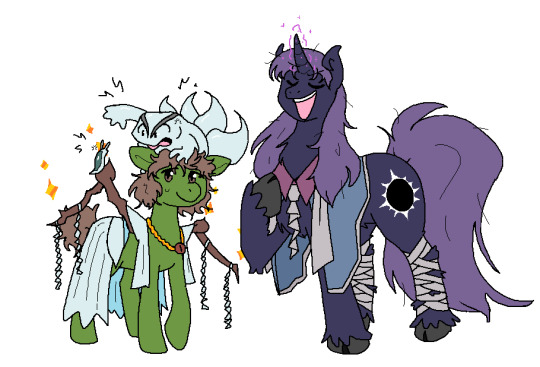
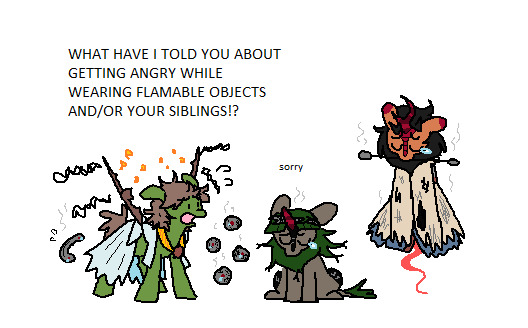
more pony au! haze edition
previous
#len'en#taira no chouki#kujiru kesa#kaisen azuma#para len'en#garaiya ogata#wilhelm von clausewitz halcyon hisuimaru#mlp#drawing#do you see why i made fumikado a kirin now ;)
33 notes
·
View notes
Photo
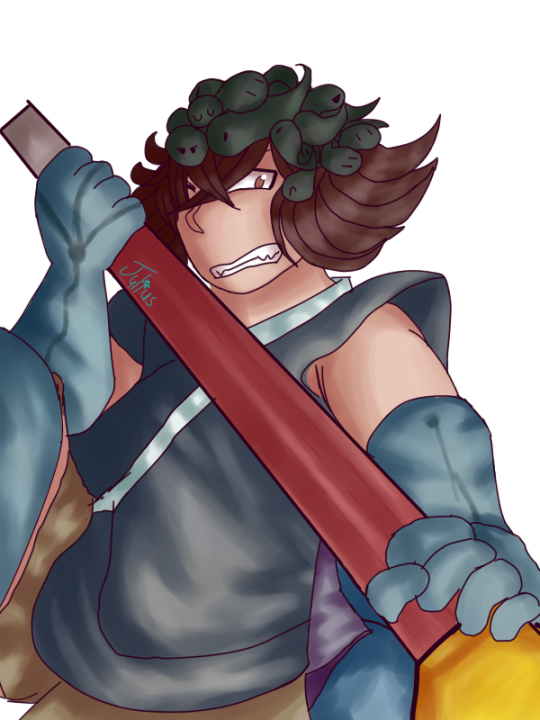

#len'en#kaisen azuma#digital art#I drew this for a friend but I'm proud of it so it's going here too#NO POSTING AT A REASONABLE HOUR WHEN PEOPLE ARE AWAKE AND WILL ACTUALLY SEE THIS#WE POST OUR ART AT 10 PM LIKE MEN
8 notes
·
View notes
Text

Len'en 10th Anniversary
Countdown 17
21 notes
·
View notes
Text
Kaisen Azuma
We gone over Kujiru last time, so it's time to go over their sworn rival and fellow shikigami under their master Garaiya Ogata:
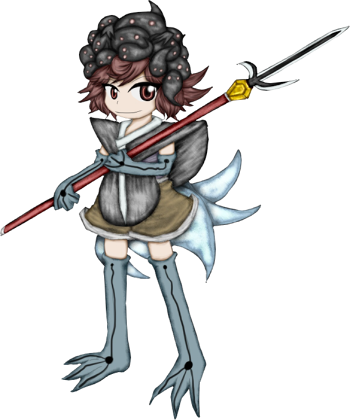
Three-legged Moon Seeker — Kaisen Azuma
Name
Their family name, Azuma (東), means "east", and is a common Japanese family name, specifically in western Japan and the Ryukyu Islands. In their given name, Kaisen (海仙), the characters mean "sea" (海) and "enlightened person" (仙).
The latter specifically refer to the xiān (仙) of Chinese conception, it refers to different things depending on the context, but most notably and relevant to us, are enlightened hermits that have achieved immortality and wield powerful magic, often Taoist in nature.
Title
Kaisen's title, the "Three-legged Moon Seeker" (月を仰ぐ三つの足), is technically the "Three Legs That Seek the Moon", to be direct, but this ordering is chosen to sound more poetic.
Additionally, we shout take a look at the verb ao-gu (仰ぐ), which has the following meanings:
(Physically) look up to
(Metaphorically) look up to; respect
Seek (for help, for knowledge, etc.)
Turn one's head upwards and drink in one gulp
Out of all four, 2 and 3 seem like the most likely meanings. as the moon seems to be a symbol for the "emperor" or even just "authority" in Mugenri/Len'en.
In the translation, 3 is chosen, likely because Kaisen didn't actually respect the "emperor" on their side of the war. In fact, Kaisen doesn't even agree with trusting Chouki as the new emperor, despite having personally trained them prior.
Species and Abilities
While Kaisen shares similarities with many other animal youkai, like having animal characteristics and being able to transform into an animal, they are technically a "sacred animal" (霊獣). However, what this means isn't exactly clear.
Kaisen is quite high in their overall abilities, they're a poerful fighter and have a number of abilities, including their knowledge of Taoist arts, ability to use shikigami of their own and their clairvoyance, though the accuracy can apparently be a bit lacking.
Their main ability, the one listed on their profile, is to "gather financial fortune". They are able to bless those who are lucky with fortune and happiness, upon other things, which is likely a manifestation of this ability.
As a shikigami, they are considered more powerful than Kujiru. Unfortunately, they require more spiritual energy to activate and activate their own shikigami in turn, this ends up being less efficient than Kujiru and leads to the latter being more convenient for Garaiya.
Mythological Bases
Kaisen actually a number of mythological bases, from both Chinese and Japanese sources, which make them a very interesting character, at least in my opinion. So let's take a look at them!
Jinchan, the Money Toad
Kaisen is predominantly based on a mythological Chinese creature known as Jinchan (金蟾 lit. "gold/golden/money toad"). It's a toad that has three legs, two front legs and one hind leg, which is positioned like a tadpole's tail at the back of the toad.
This is referenced in Kaisen only having three limbs, one of their legs we see in-game being a prosthetic, as well as in their title "Three-legged Moon Seeker".
Below: A Jinchan statue from the behind, used in Feng Shui to attract wealth to the household.

Jinchan is also related to the Chinese Taoist and legendary immortal Liu Haichan (劉海蟾). His first name translates to "sea toad" and is considered an embodiment of the Chinese God of Wealth.
In the folktale Liu Hai Tricks Jinchan (劉海戲金蟾), it is said Liu tamed a malevolent and greedy three-legged toad after fishing it out of the east sea with a string of coins.
It became Jinchan and was henceforth the immortal's companion, following Liu wherever he went. Kaisen's relationship with Garaiya may be a reference to this myth.
Below: Liu carrying the toad in his arm after fishing it out.

Additionally, it is said that Jinchan spewed treasure from its mouth with each step that it took after Liu, benefiting the poor wherever it went. This is likely referenced in Kaisen's ability to "gather financial fortune".
Gamma-sennin, the Toad Hermit
In Japan, Liu Haichan inspired the mythological Taoist immortal Gama-sennin (蝦蟇仙�� Lit. "Toad Taoist Immortal"), who in turn inspired parts of Kaisen's character.
Gama-sennin appears in the legends surrounding Taira no Yoshikado (平良門), the legendary hidden eldest son of Taira no Masakado who learns toad magic from the immortal and uses his powers in an attempt to avenge his father.
In the 17th century yomihon novel series "The Tale of Utou Yasutaka's Loyalty" (善知安方忠義伝) by Santō Kyōden, this teacher figure is instead a 3000-year old toad spirit named Nikushi-sen (肉芝仙) who lived on Mount Tsukuba (筑波山).
Below: Nikushi-sen (upper-centre) teaching Yoshikado (right of Nikushi-sen) toad magic.
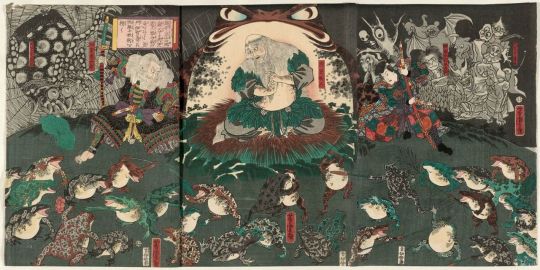
He taught toad magic to Yoshikado's sister Nyozou-ni (如蔵尼) as well, later possessing her to transform her into Takiyasha-hime (滝夜叉姫), whom Taira no Chouki is based on.
This would explain Kaisen having a part in training Chouki, as well as their spell card that reference Mt. Tsukuba, Leaping Medicine "Tsukuba Toad Oil". I should note that it's also a reference to a local cure-all from Mt. Tsukuba.
Seia-jin, the "Chinese" frog "god"
Gamma-sennin is said to command the youkai Seia-jin or Chinwa-sen (青蛙神 lit. "(green) frog god"), also simply known as Seia (青蛙 lit. "(green) frog), which plays a role similar to that of Jinchan. Indeed, despite having "god" in its name, it is but a youkai.
Both Seia-jin and Gamma-sennin are actually said to be "Chinese", but it's fairly certain that they are actually Japanese inventions.
Particularly, Seia-jin can be traced back to a Chinese novel of the same name, which tells of several tales related to the mythical beast. However, it was never worshipped as an actual deity in China.
It is said that the house that Seia-jin appears in front of will have its family blessed with financial fortune and happiness, this is again referenced in Kaisen's ability.
Summary: Taoist Hermit/Toad Familiar Pairs
It is in reality just as possible that JynX only based Kaisen on one of these Taoist hermit/toad familiar pairs, since the Chinese pair pretty heavily inspired the Japanese pair.
However, if I had to narrow it down, I'd actually say that Kaisen's based on the Chinese Jinchan but the Japanese Gamma-sennin. Only Jinchan is is said to have three legs, while Gamma-sennin's role in mentoring Taira clansmen parallels the story of Len'en directly.
It's just as possible that these two are what JynX ultimately ended up focusing on, but given the intertwined nature of these four it would realistically be impossible to pinpoint unless we learn more about Kaisen, or even get a direct answer from JynX.
No matter what the truth really is, the idea behind Kaisen's main inspiration should be clear enough.
Bonus: The "Lunar Spirit"
Here we get into slightly shakier territory: I believe that Kaisen may also be inspired by the Chinese concept of the "lunar spirit" (月精), the spiritual essence of the moon.
There are three major candidates as to who this spirit is, the Chinese Moon Rabbit (月兔), the dark parts of the moon, the moon goddess Chang'e (嫦娥) and an unspecified toad, the light parts of the moon.
Below: A bronze mirror depicting Chang'e (left), the moon rabbit (right) and the toad (bottom-center) surrounding a sweet osmanthus on the moon.
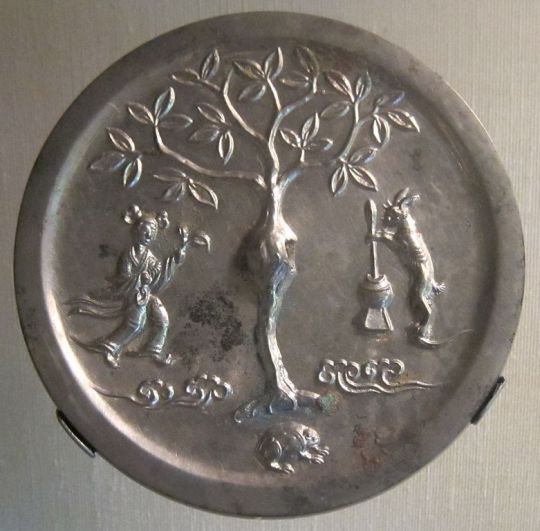
This toad is sometimes said to be what Chang'e transformed into after flying to the moon, but modern Feng Shui instead equates the lunar toad with Jinchan. This may explain why Kaisen is called the "Moon Seeker" in their title.
The concept of the lunar essence is believed to have arisen as the counterpart to the "solar essences" (日之精), the "three-legged crows" (三足烏) that lived in the suns (multiple because Chinese mythology tells that there used to be 10 of those).
When spread to Japan, these three-legged crows fused with the divine messenger bird of the Shinto sun goddess Amaterasu, the Yatagarasu (八咫烏), who is sometimes said to be the sun itself.
If the lunar spirit is extended to be the counterpart of the Yatagarasu as well, this may explain Kaisen's status as a "sacred animal".
Minor Theory: Kaisen's Role
I have a small theory on Kaisen's role as a sacred animal based on the idea that the lunar toad could be extended to be the counterpart of the Yatagarasu.
Let's first learn more about the Yatagarasu: In Japanese mythology, it is most famously the divine messenger bird of the sun goddess Amaterasu (or, depending on the source, Takagi-no-Kami, the second god to come into existence).
It was a gigantic bird who guided Kamuyamato Iwarebiko-no-Mikoto (神倭伊波礼琵古命) through the dangerous lands of Yamato to a suitable place to set up his government as the legendary 1st emperor of Japan, Emperor Jimmu (神武天皇).
Below: The Yatagarasu guiding Iwarebiko (center).
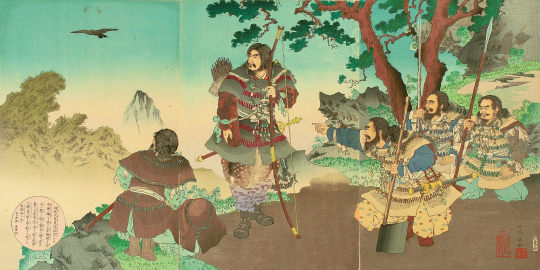
My theory is that perhaps Kaisen is a similar being, this time of the moon rather than the sun, a divine messenger sent to guide Mugenri's "true emperor".
This may explain why they are the "moon seeker", as well as why they were against following Chouki as the new emperor, as they may have a sense for who is meant to be, or at least suitable to be, the emperor of Mugenri.
Note: Tsukuyomi in Mugenri
If Kaisen truly is a sacred animal sent by some deity on the moon to guide Mugenri's "true emperor", it may be that they are in fact sent by the Shinto god of the moon, Tsukuyomi-no-Mikoto (月読命).
This ties quite neatly into this theory I had about the origins of Mugenri, particularly the bit near the end where I suggest that Tsukuyomi may be the god of Mugenri as a whole.
Tsukuyomi being the "supreme" god of Mugenri may also explain Mugenri's association between the moon and rulership, in opposition to the outside's sun as the symbol of authority, in Japan at least.
Additionally, the Japanese royal family, the one in reality I mean, trace their own ancestry back to the Shinto sun goddess Amaterasu.
Maybe a similar thing once happened or is meant to happen with Mugenri? Perhaps Kaisen's role is to look for a descendant of Tsukuyomi and guide them to become the emperor of Mugenri?
We obviously have no way of knowing right now, but it's a fun possibility to consider nevertheless.
Ending
And that's all I have on Kaisen! A lot of mythology and quite a bit of theory this time, but with such a mysterious character it is indeed quite fun to speculate a slight tad.
As usual, I hope you enjoyed~! :)
7 notes
·
View notes
